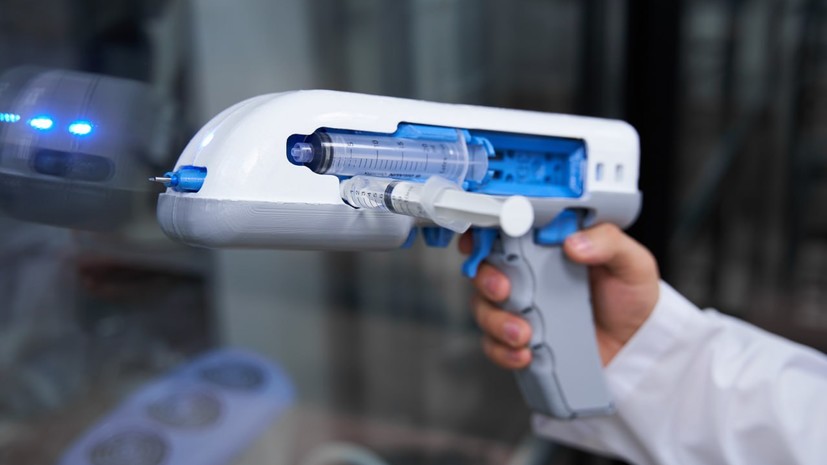Scientists from the REC of Biomedical Engineering OF NUST MISIS have developed a "tissue gun" that allows you to sew wounds of mild and moderate severity with polymer medical glue. The device is designed to assist the wounded in the military field and in the emergency zone. This was reported by the press service of the university.
When cross-linked, the bioactive material creates a film on the wound, preventing bacterial infection from getting there, and favorable conditions for accelerated healing. According to the developers, for the prevention of bacterial infection and anesthesia, you can also use materials with the addition of drugs - antibiotics, anesthetics, etc. Before work, the syringes included in the apparatus are filled with a biopolymer composition and medicines.
"When you pull the trigger, the ultrasound system simultaneously collects all the components in the field of printing, thereby forming a polymer cross-linked biomaterial capable of stopping bleeding and accelerating tissue regeneration," said Timur Aidemir, the author of the development, candidate of technical sciences, engineer of the REC of Biomedical Engineering of NUST MISIS.
The body and parts of the device were printed using 3D printing technologies, its cost price was 40 thousand rubles. However, in industrial production, not 3D printing will be used, but plastic casting. This will make the device even cheaper. If necessary, the details of the device can be printed on a 3D printer directly in the mobile hospital, experts say.
- Gettyimages.ru
- © piola666
According to scientists, the device uses syringes up to 22 ml, which is 2 times more than that of analogues. In addition, the new "fabric gun" for the first time used a design based on an ultrasonic membrane with an automatic transmission system for a cross-linking agent, which allows you to create a focused jet of aerosol.
"Unlike existing world analogues, the developed device is completely autonomous and is powered by built-in batteries that can be charged via a USB port," Timur Aydemir emphasized.
According to scientists, the "tissue gun" has already been successfully tested on laboratory animals on the basis of the NMIC of Oncology named after N.N. Blokhin.
"Mobile hospitals deployed in an emergency or combat zone need an autonomous manual device that, in difficult conditions, will stop bleeding and accelerate the regeneration of living tissue. The currently existing devices with a similar principle of operation are large and complex for such conditions, "explained Fyodor Senatov, co-author of the development, candidate of physical and mathematical sciences, director of the REC of Biomedical Engineering of NUST MISIS.

